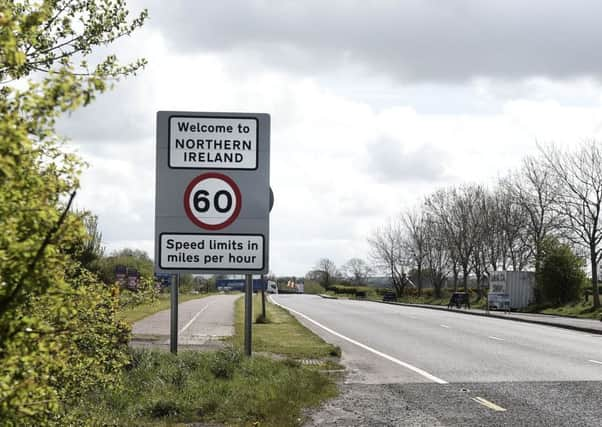Peter Sellar and John Bell: Will Wales and England go for WEexit?


Imagine that the United Kingdom (as represented by the Crown in Scotland and Northern Ireland) remains in the European Union, but Wales and England leave (“WEexit”). This would fit with the expressed wishes of the different peoples. It would also remove some explosive issues from the agenda. There would be no need to talk of Indyref2, a second referendum on Scotland’s independence. There would be no need to think about how to deal with the land border between Northern Ireland and the Republic, nor how to square Brexit with the Good Friday agreement. Like the Queen’s other territories which are not part of the EU, the Channel Islands and the Isle of Man, Wales and England could control migration numbers and manage passporting in financial services. And all that without ever triggering Article 50!
Too good to be true? Well, look at what we already know. The departure of the whole of the UK (“Brexit”) has to be achieved by giving notice to the European Council under Article 50 and then negotiating a withdrawal agreement within two years, covering a wide range of matters, such as on accrued pension and social security rights of citizens who have moved in and out of the EU over the last 43 years. In parallel, the UK has to negotiate agreements which will govern its new relationship with the EU on a wide range of trade, migration and other issues. These new relationship agreements are complex and will take many years to negotiate (Philip Hammond, our new Chancellor of the Exchequer, estimated that it could take six years).
Advertisement
Hide AdAdvertisement
Hide AdThese new relationship agreements would need the consent of 38 parliaments in the member states and the EU, so they will not be ratified quickly. Therefore, there needs to be an arrangement to govern the period between withdrawal taking effect and new agreements coming into force, a period which could easily be as long as four years (that has been Michael Gove’s prediction). There are also agreements to be made with the World Trade Organisation and non-EU trading partners. All of these will take time. We are sure those who voted for Brexit will get frustrated by the slowness of this process.
WEexit operates differently. Article 50 only applies where a “Member State” seeks to withdraw from the EU, not where part of a Member State seeks to withdraw. There is no formal process for the exit of part of a Member State, but it has happened once, when Greenland (part of the Kingdom of Denmark) withdrew from the EU, though the geographically smaller Kingdom of Denmark is still a member.
The key agreement required is to amend Article 52 and Article 355 on “the territorial scope of the European Union”, which already makes provision for the status of the Channel Islands and the Isle of Man. The key new wording would add England and Wales to the list of territories of the Queen to which the Treaties do not apply. The advantage for England and Wales over Article 50 is that there is no timescale on this process and a solution can be reached on all relevant matters at the same time. It also means, aside from anything else, that the Falklands do not lose their current relationship with the EU, which is threatened by Brexit, and in which they had no democratic say.
The Queen’s territories in the Channel Islands and the Isle of Man are not part of the EU, but they are bound by EU rules in relation to free movement of goods and they have negotiated access to the Single Market for some of their financial products and services. In practice, they allow free movement of persons from the EU, though they are not bound by treaty to do so and they do operate restrictions on land acquisition. This is an illustration of the way some of Her Majesty’s territories outside the EU have a different status and a different relationship to the EU. WEexit would involve creating similar kinds of relationship.
The advantage of WEexit for England is that many of the arrangements have to be sorted out between Westminster and Edinburgh and Belfast, rather than with the EU 27. Since the United Kingdom of Scotland and Northern Ireland would be part of the EU, there is no need for a withdrawal agreement. Those countries retain the liabilities which the UK has acquired over the past 40+ years. Naturally, there would need to be a redistribution of these costs, but that would be a matter of internal negotiations between Westminster and the other parts of the UK, negotiations which can proceed at their own pace.
Of course, WEexit would lead to a more federal arrangement between Wales, England, Scotland and Northern Ireland. The Constitutional Reform Group, headed by Conservative peer Lord Salisbury, has anticipated this and drawn up a constitution for the UK which shows that a federal solution is possible.
Sir David Edward has thought this option to be implausible if not downright silly. But the more the reality of the Brexit negotiations becomes apparent, the less attractive they become. Complex negotiations conducted over many years with a very awkward transition in the middle make Article 50 a very unattractive option, particularly if the process also triggers another independence referendum in Scotland. WEexit offers the Welsh and English a more orderly way out of the EU, and enables the peoples of Scotland and Northern Ireland to get what they voted for. And while some may doubt its plausibility, the counter is simply to ask: why could WEexit not work?
• Peter Sellar is an advocate at the Faculty of Advocates, Edinburgh, specialising in EU law, and John Bell QC is Professor of Law at the University of Cambridge